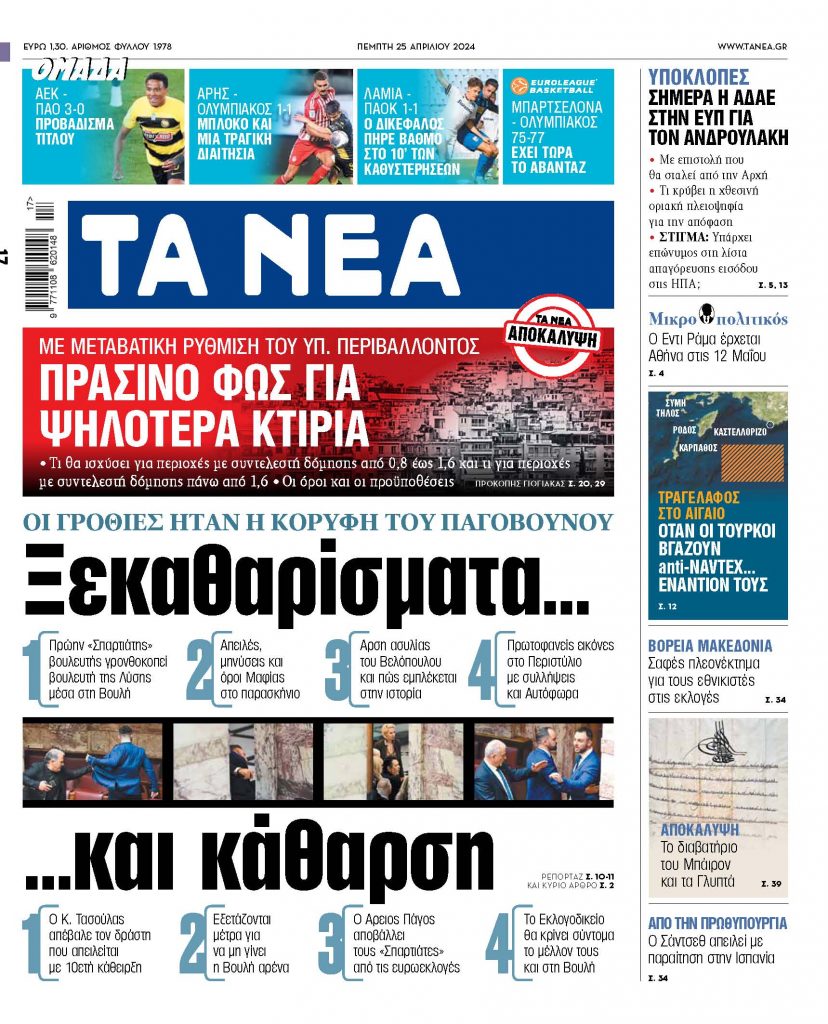A minister had once been staunchly criticised for admitting publicly that he had not had the time to read the first bailout memorandum, before voting for it in parliament.
He had confessed, in other words, that he did not know exactly what he was voting for as a member of the cabinet and of parliament.
Many of his erstwhile critics are now occupying the seats of the ruling majority in parliament.
The obvious question is how many current MPs will read the omnibus bill, a technical, 1,531-page document with 399 articles, which they will vote on in a few days?
Will the majority who will vote ‘yea’ and the minority who will vote ‘nay’ know what they have voted for?
The question is all the more pressing when it involves draft legislation that affects the lives of citizens in so many ways.
This technical document brings with it many changes, many quite essential.
In general terms, the changes may be known, as they have been agreed to with creditors, but that general knowledge is piecemeal, and consequently lacking.
The devil, after all, is in the details.
As the report in today’s Ta Nea indicates, there are many details in the fine print of the omnibus bill.
The government appears to have realised by know that delays carry an even greater cost. It is hurrying – and rightly so – to finish the third fiscal adjustment programme evaluation.
However, the government’s determination is due to something else as well: the perception that the more quickly the vote is completed, the more reactions will be tempered.
It remains to be seen if this perception is yet another governmental self-delusion.
